

At first glance, equipment on tracks may look a little intimidating. For the uninitiated, rolling bands of rubber or steel in place of wheels seems like something that belongs on armored battle tanks in war movies.
But ask any construction crew working on substandard ground conditions, and the value of tracks in civilian life becomes quickly apparent. It’s all about the lay of the land.
When that land is inclined, muddy, soft, or sludgy, tracks are the propulsion system that often proves more efficient than the usual set of wheels.
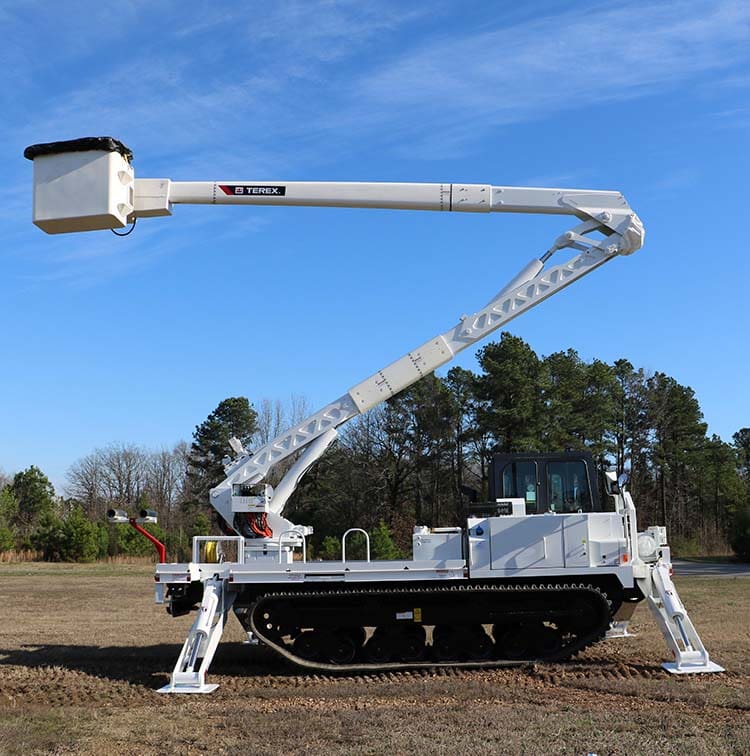
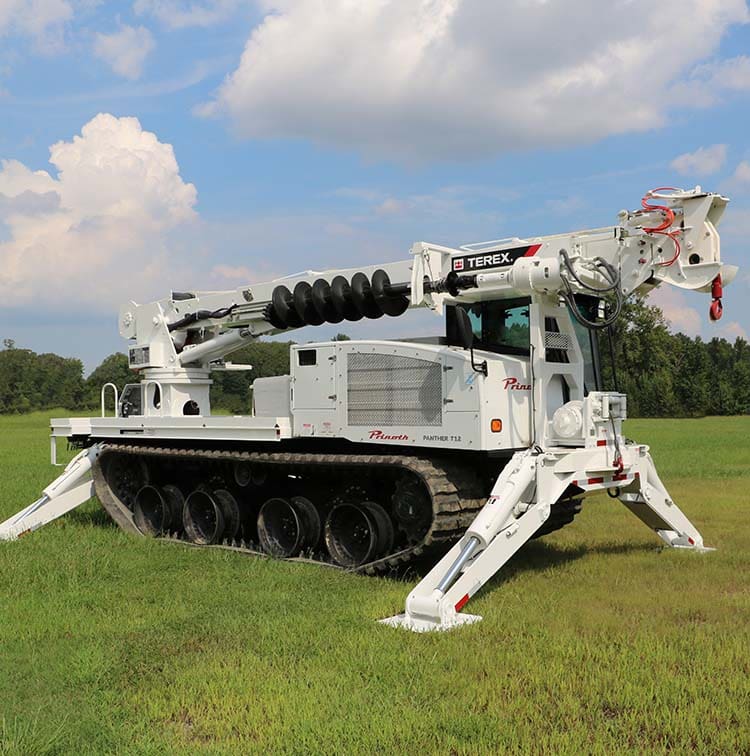
THE HISTORY OF CONTINUOUS TRACK PROPULSION
The idea of continuous tracks first came about in the 1700s when a British politician/inventor, Richard Lovell Edgeworth, considered what he called the possibility of a “cart that carries its own road”.
The idea failed to take shape into reality until many years later. In the 1830s, a Polish physicist worked on it with no success, and he was followed by several others who tried to create their own prototypes.
Commercial success finally came in the 1900s with the “Hornsby Crawler” designed by Richard Hornsby & Sons.
Interestingly, a demo of this crawler was witnessed by an American soldier who thought the tracks resembled a “caterpillar”. He communicated what he had seen to Benjamin Holt of Holt Manufacturing. Holt was fascinated by the notion of continuous tracks and began working to improve the design. From his work, in 1925, the Caterpillar Tractor Company was born, and the rest, as they say, is history.
Initially, tracks were made of steel. Rubber was popularized by the Japanese during WWII on military vehicles, because they lacked sufficient supply of the necessary metal.

• The main advantage, as mentioned above, is the ability to navigate different ground conditions. Tracks go where tires struggle to get because of weight distribution. Wheels are the point of contact between a vehicle and the ground. Given their smaller shape and size, wheels exert a large amount of concentrated weight (measured in pounds-per-square-inch or PSI) on the ground each time they revolve. Therefore, if the ground is not strong enough or smooth enough, the vehicle itself becomes unstable.
In contrast, tracks offer far better traction because they have contact with a larger ground area. This allows the vehicle to almost float or glide over uneven or soft surfaces without concentrating the weight so much that the ground fails.
• Tracks are better equipped to handle rough, rocky terrains, or surfaces strewn with demolition debris that can quickly wear out/puncture rubber tires, causing holdups at a jobsite.
• Maneuverability is a third advantage of tracked equipment. They turn within their own footprint which means they negotiate tight spaces better than tired machines.
• When weather turns inclement, with heavy rains, snow, or storms, the all-weather attributes of tracks keep equipment working in areas where tired machines couldn’t.
• Track carriers, particularly rubber tracks, are preferred when the environment is a concern as they leave less of a footprint compared to tired machines.

As the first, true single-source provider of specialized truck and heavy equipment solutions, Custom Truck One Source has the widest selection of equipment on tracks for a variety of applications:
Bucket trucks are a quintessential product line in the AWP inventory of boom lifts, scissor lifts, vertical mast lifts, cherry-pickers, etc. They’re designed for the sole purpose of lifting workmen up in `buckets’, from which they can perform their jobs.
Choose from top manufacturers of tracked buckets, including Terex, Versalift, Elliott, and National Crane to reach heights all the way up to 210 feet.
Any industrial job that requires holes to be dug in the ground calls for a digger – a crane-mounted truck with a large boom and an auger (a drilling device). Utilities is a sector where diggers find the a lot of use in power distribution and power transmission applications. However, they’re also used by telecom, construction, forestry, and other industries as well. At Custom Truck, we offer a wide range of units from the leading brand: Terex.
Terex Commander 4042 - Kato IC-50
Terex Commander 4042 – Kato IC-55
Terex Commander 4047 – Kato IC-75-2
Terex Commander 4047 – Morooka MST-1500
Terex Commander 4047 - Kato IC-75
Terex Commander 4047 - Terramac RT6
Terex Commander 6060 – Morooka MST-2500
Never worry about getting stuck out in the swampy fields. Our track dump beds, manufactured by Kato, are the perfect solution to keep you and your crew up and running.
At Custom Truck, safety is of the utmost importance. That’s why we take pride in our personnel carriers, with track machines manufactured by Kato and Morooka. Choose from a 10-passenger personnel carrier all the way up to a 22-passenger carrier. Make safety a number one priority for you and your crew.
We stock a variety of specialty track equipment specific for unique jobs. Go from land to water with our amphibious vehicles or take advantage of our welding units. Track machines are built by industry-leading manufacturers including Kato and Morooka.
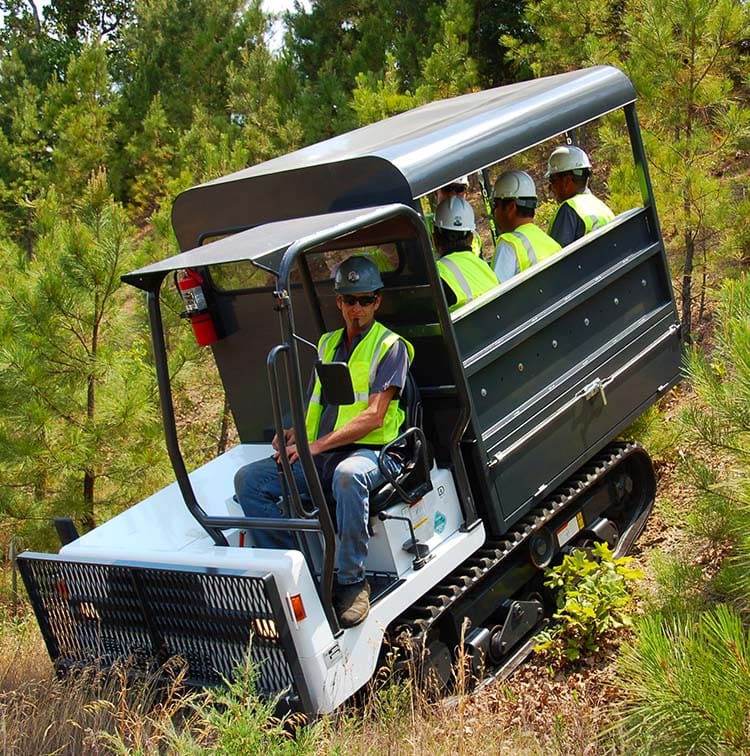
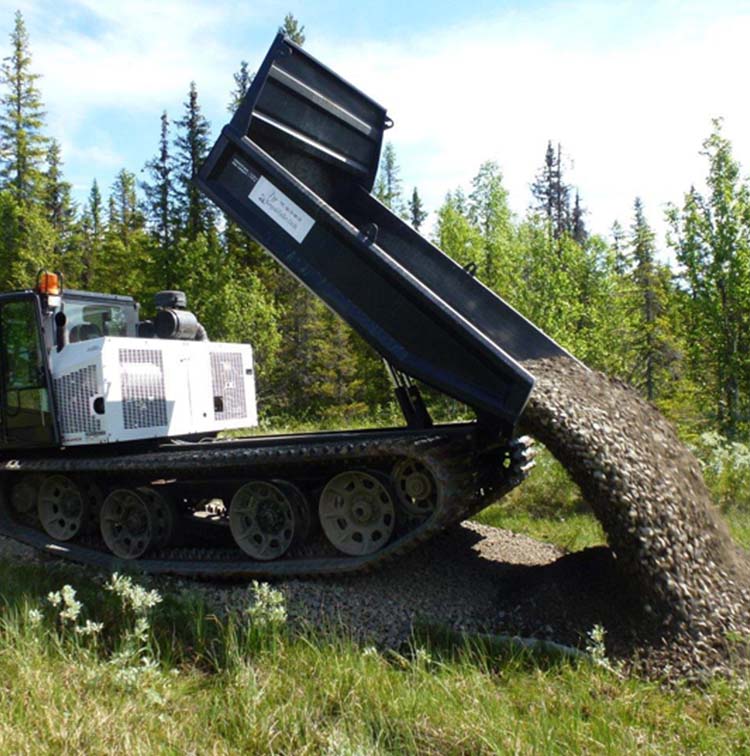
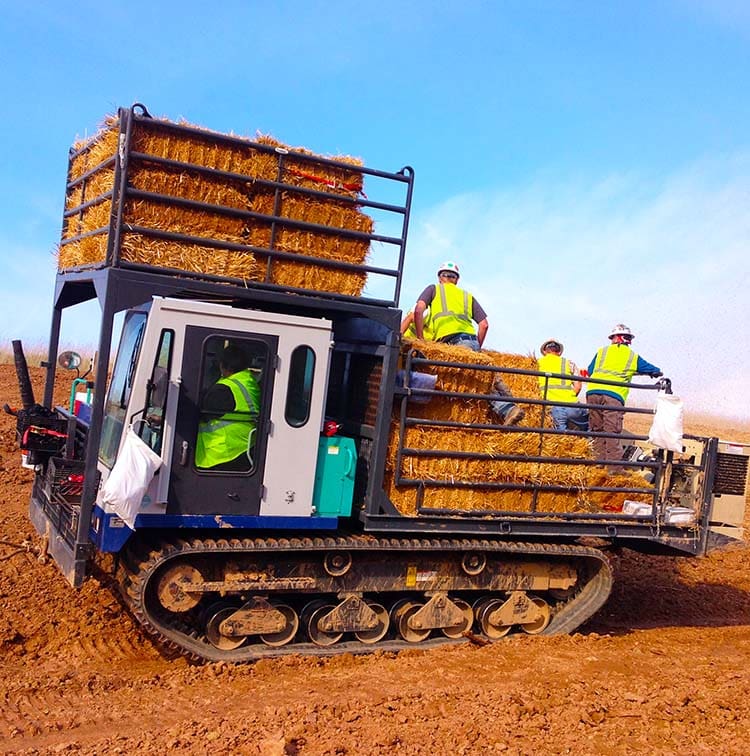
With tracked equipment, there is a choice to be made: versatile rubber or durable steel.
Where steel tracks score:
• Steel tracks predate rubber and have a reputation of dependability in the market that has solidified over the years.
• Another important attribute of steel tracks is that they are a continuous chain of separate links in which, if one link breaks, that piece can be removed and replaced. While rubber is also a continuous track, the nature of the material means the assembly cannot be fixed piece by piece.
• No matter what the weather or ground conditions, steel tracks will do their job. The metal is less susceptible to wear and tear than rubber.
• The considerable weight of steel tracks is an advantage in heavy machinery, like excavators that shift large volumes of soil above their center of gravity.
• Steel tracks are not temperature sensitive like rubber, which may get brittle in extreme cold weather and soft in extreme hot weather.
• They need less maintenance and upkeep and are easier to clean.
Where rubber tracks score:
• The initial cost of purchasing rubber tracks is less. Keep in mind though that they need replacement faster than steel.
• You can run rubber tracks on hard surfaces such as asphalt or concrete without needing to lay down rubber mats like you would for steel tracks.
• They offer an easier ride for operators as noise, vibrations, and shock transfers are significantly lower.
• Though tracked equipment is slow by design, rubber tracks move faster than steel ones.
• They cause less surface damage in built up areas. So, while steel tracks are ideal on open lands, forested lands, or demolition sites, you want rubber when working in urban areas where you don’t want to tear up the existing ground as the tracks pass over it.
Contact us for any questions you may have about buying or renting tracked equipment by clicking HERE. Our customer service team is standing by to help you make the best decision possible for your business.